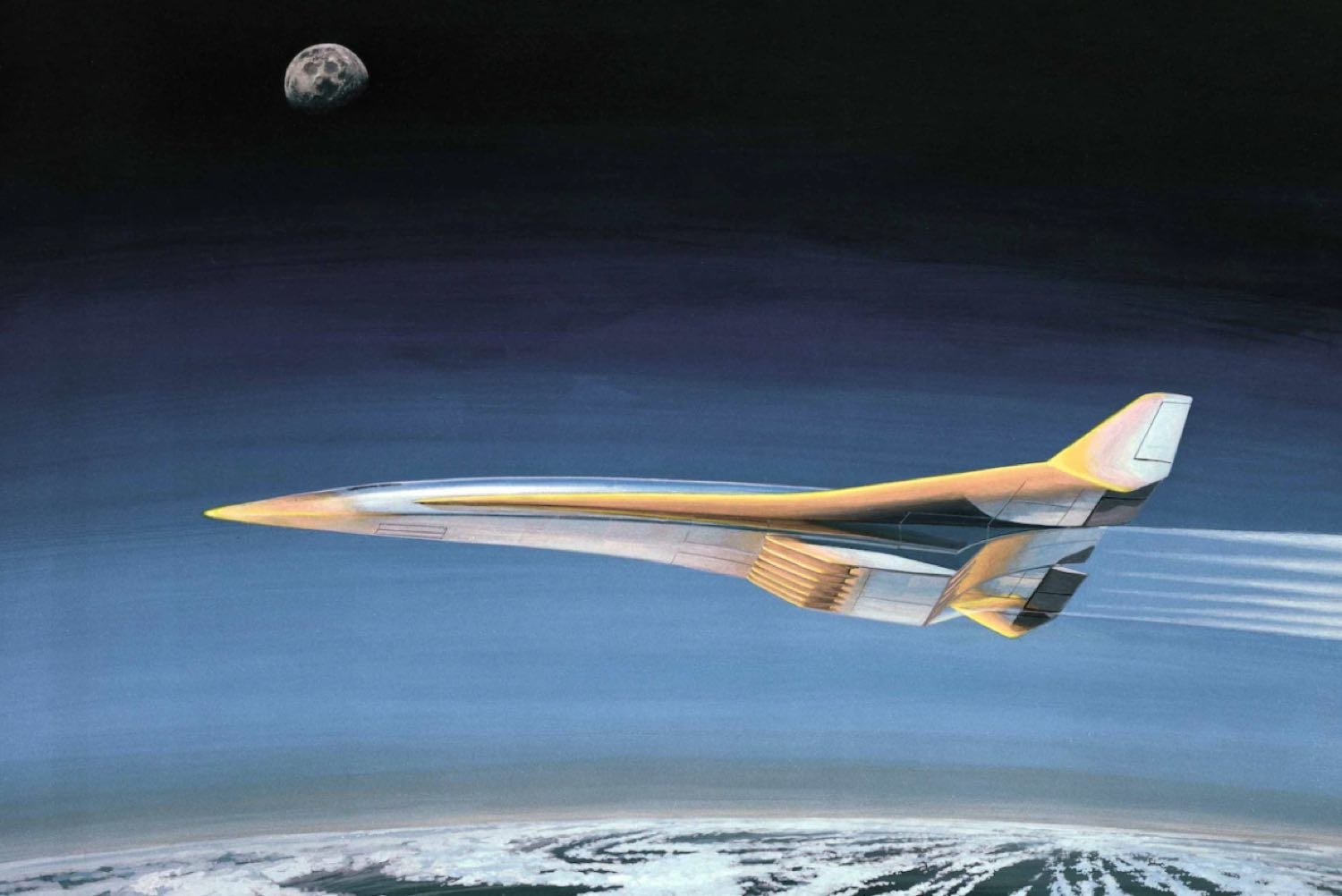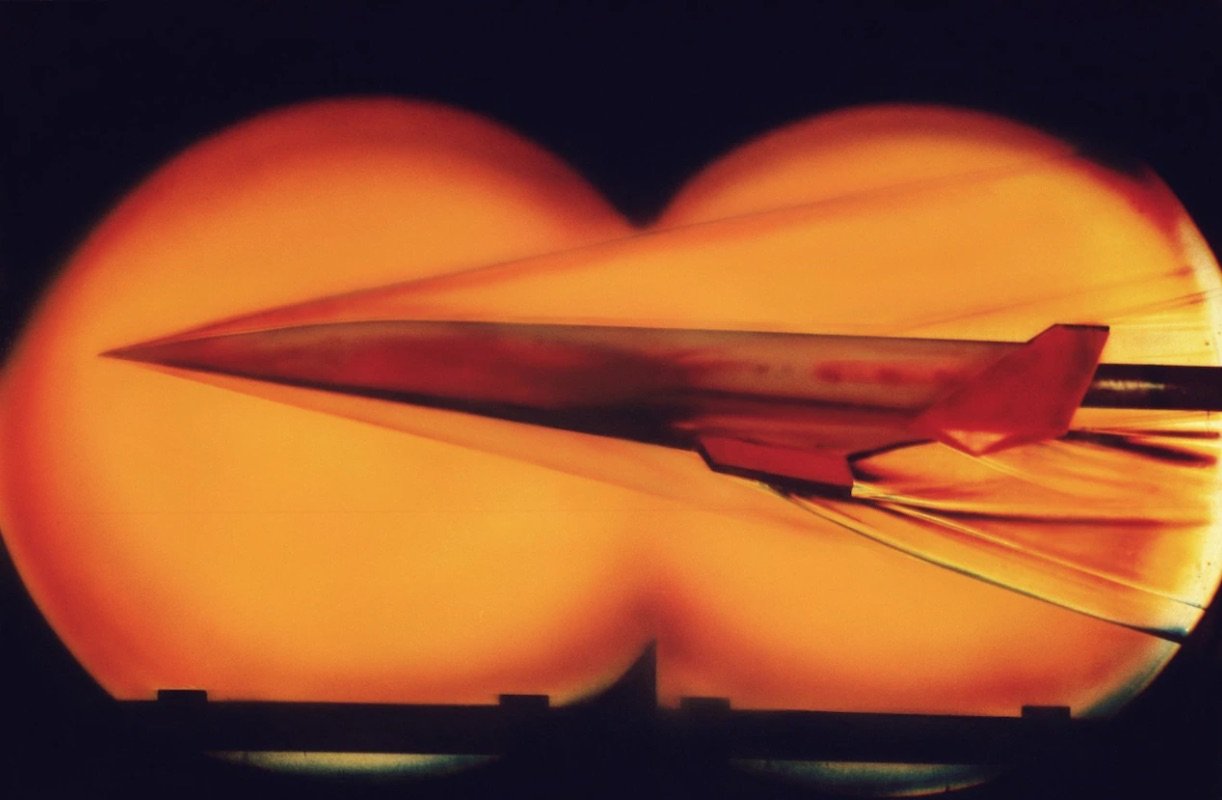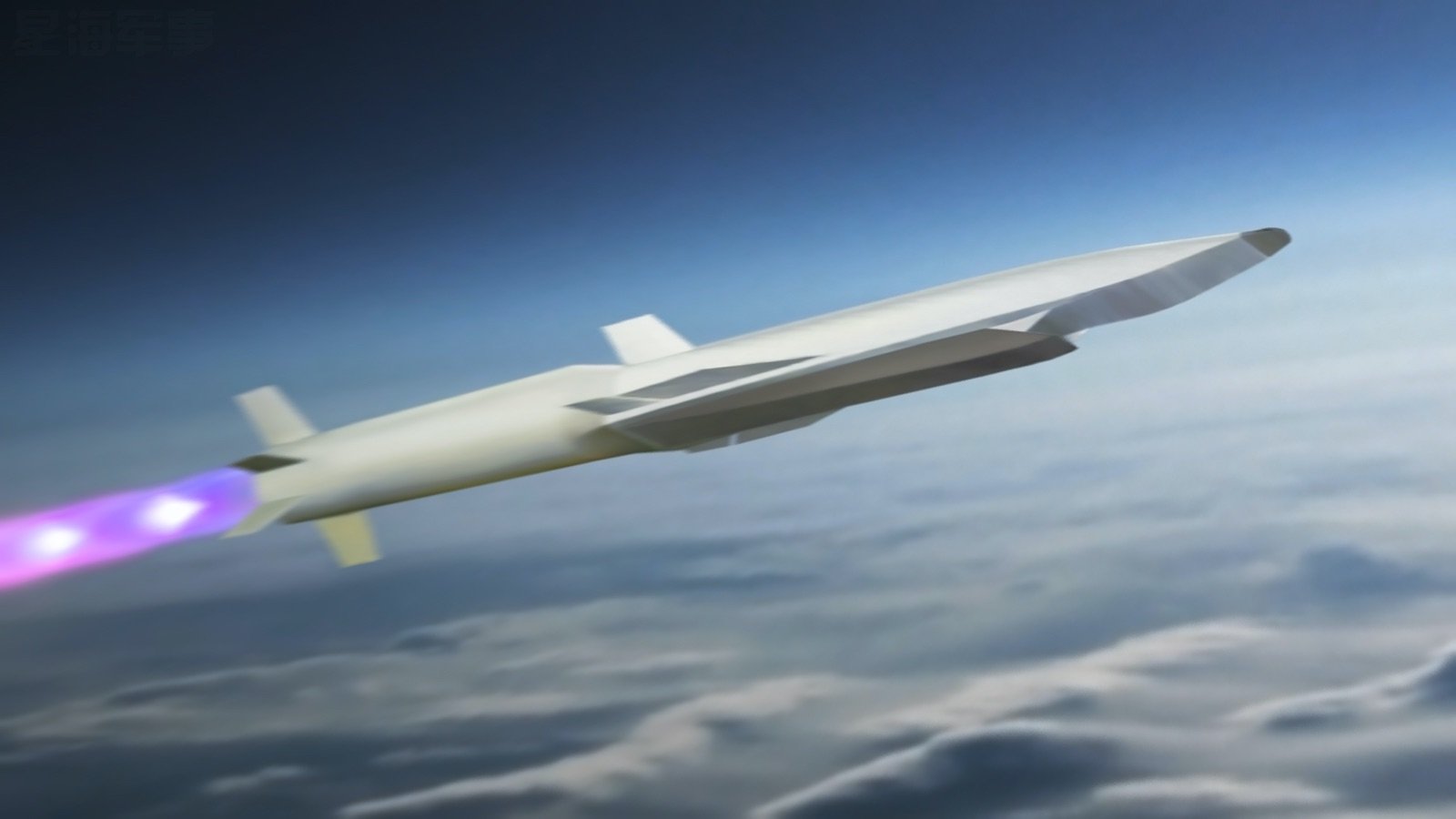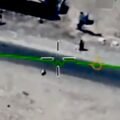

Welcome to this week’s edition of The Intelligence Brief… among the items entering our airspace this week include 1) hypersonic developments occurring in Russia and China, 2) signals from the Pentagon and Congress that the U.S. is gradually be warming up to upgrading its own hypersonics programs, and 3) what newly uncovered NASA incident reports tell us about unidentified aerial phenomena being encountered by pilots.
Before we dive into things, heading over to see what’s been cooking this week at The Debrief, Tim McMillan asks whether lightning could be responsible for the origin of life on Earth, and Editor-in-Chief MJ Banias examined why one researcher thinks humanity should build a “lunar ark” on the Moon. Meanwhile, according to new drone guidelines, the FAA will now require Remote Identification, as well as new rules for Operations Over People, which will take effect on April 21, 2021. And lastly, DARPA’s plans for recruiting marine life as underwater spies appears to be well underway.
With that out of the way, your Intelligence Brief begins now.
Hypersonics: A Slow Build Toward High Speed Weapons Systems
Last October, Russia announced the successful test launch of a Zircon hypersonic cruise missile, a weapon with a more than 600 mile range and purportedly equipped to travel nine times the speed of sound.
The test launch, which coincided with Vladimir Putin’s birthday, was described by the Russian President as among its “unparalleled weapon systems” which he said, “will certainly ensure the defense capability of our country in the long term.”
Similar developments occurring in other nations, which include China’s waverider hypersonic flight vehicle that the country claims can avoid any current missile defense systems, emphasize the way such technologies are raising the stakes on the future of warfare.
In light of such concerns, the Department of Defense has amplified its own efforts toward the development of hypersonics in recent years, albeit slowly. In February, the subject of hypersonics development had been a key topic of discussion at the Defense Department’s Engineers Week, an annual event aimed at raising interest and awareness of issues in engineering and technology.


The long-sought development of hypersonic missiles and other craft by the U.S. and its adversaries has been no secret over the last several decades. Such weapons and aircraft are capable of bringing an element of surprise to warfare that is continually driving how combat will be waged on the battlefields of tomorrow.
“Historically, the United States has been a world leader in hypersonics research and development,” said Mike White, the principal director for hypersonics with the Office of the Under Secretary of Defense for Research and Engineering, at the DoD’s Engineering Week event last month. However, he also acknowledged the Pentagon’s hesitance in recent decades with regard to moving more of the U.S. military’s weapons technologies into the area of hypersonics.
“[W]e have consistently made the decision not to transition to warfighting capability and warfighting systems in hypersonics,” White said, although the increased attention being put toward such technologies by adversary nations may be gradually changing this dynamic.
Will the Pentagon Pivot Toward Hypersonics?
A report updated in December 2020 by the Congressional Research Service found that not only the Pentagon, but Congress too have “shown a growing interest in pursuing the development and near-term deployment of hypersonic systems” on account of such advances in Russia and China; especially those potentially capable of being equipped with nuclear warheads. While both countries have placed emphasis on the development of operation hypersonic glide vehicles and similar technologies capable of delivering such a payload, the U.S. has remained hesitant to appropriate its hypersonic craft for carrying nuclear weapons.
“As a result,” the CRS report says, “U.S. hypersonic weapons will likely require greater accuracy and will be more technically challenging to develop than nuclear-armed Chinese and Russian systems.”
According to the DoD’s budget for the current fiscal year, hypersonic research and development rose from $2.6 billion in FY2020 to $3.2 billion, with $206.8 million being apportioned for defense systems related to potential threats from hypersonics. Despite the Hypersonics division overseen by Mike White within the Office of the Under Secretary of Defense for Research and Engineering, there is no data indicating that the Pentagon presently operates any programs of record related to hypersonics.
White says that rather than development and acquisition of hypersonic weapons, the U.S. is focused on prototypes that will “assist in the evaluation of potential weapon system concepts and mission sets,” the Congressional Research Service report states.
According to White, the DoD’s current strategy is outline in three parts: 1) fielding offensive hypersonic capabilities for use in “maritime, air and land-based strikes against time-critical, heavily-defended, high-value targets,” 2) development of “a layered system for defense againt hypersonic systems,” which the DoD hopes to have operational by the end of the decade, and 3) development of reusable hypersonic systems by the 2030s.
Hypersonics are unique for a number of reasons, which include not just their flight speeds, but also their altitudes. Hypersonic systems currently being explored by the Pentagon are capable of flights ascending to as much as 200,000 feet, placing them between the ranges of traditional air defense systems and the maximum performance altitudes of ballistic missile defense systems.
According to a Pentagon press release from late February, flight in the upper atmosphere introduces a variety of new considerations—and advantages—for defense capabilities.
“Couple the speed with the altitude and the maneuverability you have a very, very survivable system against any current defensive capability,” White said. “As a result, these systems provide a highly survivable capability to hold targets at risk hundreds, and even thousands, of miles out with flight times measured in minutes.”
On account of their unique performance capabilities, Hypersonics deployed by our adversaries may also present unique new threats.
“Hypersonic weapons such as Russia’s 3M22 Zircon fly so fast and low—at speeds of up to Mach 6 and at a low atmospheric-ballistic trajectory—that they can penetrate traditional anti-missile defense systems,” Military.com reported last year.


Such Russian devices move so quickly that air pressure ahead of them is greatly increased as they are propelled forward, coating the weapons with a plasma sheath that has the added effect of absorbing radio waves, effectively cloaking the aircraft from radar detection.
Although the U.S. has lagged behind other nations in the development of such technologies, White said in Februrary that the Pentagon is coordinating with American universities to bolster programs that will produce an engineering workforce in the years ahead “to build up the capacity to build hundreds and even thousands of these weapons.”
“We’re working with the universities to create a very robust curriculum and set of research topics to get the future workforce energized,” White said, “and to make sure that we’ve got the talent we need across the spectrum of capabilities.
While the DoD is paving the way toward a future that is very likely to see more U.S. involvement in hypersonics development than in years past, questions remain as to how such technologies will be enabled on the legislative side of the equation. In order for Congressional approval of future budgets allocated to such research and development, the military will be required not only to foster the engineering workforce for hypersonic systems development in the years ahead; they must also clearly outline the Pentagon’s mission objectives in ways that aid lawmakers in evaluating their necessity to national defense.
Possible Aviation Hazards From UFOs Revealed in NASA Incident Reports
In a recent investigation by The Debrief, a number of striking incident reports logged over several decades with the NASA-maintained Aviation Safety Reporting System (ASRS) detail pilot encounters with unidentified aerial phenomena. In many of the incident reports we uncovered, the aircraft or objects were often observed in close proximity to the pilots, who in at least some instances feared the potential for a midair collision.
One of the most intriguing reports we uncovered in our investigation involved a sighting of a group of unusual aircraft over Greene County, New York, in 2015. The pilot, who stated in a report later detailing the incident that he and his passenger “could not see any kind of wings, rotors, or form of propulsion” on the devices, nonetheless referred to them as unmanned aerial vehicles (UAVs). In fact, very seldom in reports logged by pilots involving observations, or even near-collisions with unidentified craft, do terms such as “UFO” or its more sanitized alternative, “UAP,” appear in writing.


This points to a serious potential hazard faced by the aviation community, although not particularly one that is directly posed by such aerial objects. Rather, the problem exists within the “culture of ridicule” surrounding the UFO topic, which has largely dissuaded pilots from reporting incidents that involve unrecognized objects they have encountered. If unidentified aircraft or objects of any kind are operating in our skies which might represent a potential hazard to the safety of pilots, crew, and passengers, it is vital for aviation officials to have the ability to gather reliable information about such incidents and assess them.
Do unidentified flying objects pose a threat to aircraft? The answer is yes… but only if aviation professionals continue to be encouraged to ignore them out of fear of ridicule.
That concludes this week’s edition of The Intelligence Brief. As always, don’t forget to subscribe and get email updates from us here, or read past editions of The Intelligence Brief at our website. And as always, if you have a tip or other information you’d like to send along directly to me, you can email me at micah [@] the debrief.org.


Meanwhile, here are the top stories we’re covering right now…
- Newly Uncovered NASA Reports Reveal Pilot Encounters with UFOs
An investigation by The Debrief has revealed reports filed with NASA’s Aviation Safety Reporting System detailing pilot encounters with UFOs.
- Seeing Other Worlds with the Giant Magellan Telescope Ep. 1: Debriefed with Cristina Gomez – This week Cristina tackles the future of Space Exploration via Space & Earth based telescopes
This week Cristina tackles the future of Space Exploration via Space & Earth based telescopes, specifically focusing on the next generation of Ground Based massive mirror arrays such as the Giant Magellan Telescope that is being assembled high up in the Atacama Desert of Chile.
- Bacteria Strains Recovered From ISS Are New to Science, Study Says
Scientists have found that bacteria recovered from the International Space Station were previously unrecognized by science.
- Elon Musk Wants to Put Electrodes in your Brain Designed to Aid the Disabled, Neuralink May One Day Allow You to Live Forever
Elon Musk has identified a new frontier he also plans to conquer: the human mind via a Brain Machine Interface (BMI).
- Scientific Advances are Ruining Science Fiction
Best-selling science fiction author Douglas Richards explains why our exponential technological development is ruining a literary genre.
- Remote Identification and Other New FAA Drone Rules Take Effect This April
According to the new guidelines, the FAA will now require Remote Identification, as well as new rules for Operations Over People, which will take effect on April 21, 2021.
- Scientists Want to Build an ‘Ark’ on the Moon In Case of Humanity’s “Total Collapse” A “Lunar Ark” will store Earth’s biological material on the Moon.
A researcher has proposed that humanity build a “lunar ark” on the Moon to store over 6.7 million samples of seeds, spores, sperm, and eggs.
- Lightning Sparked the Origin of Life, According To Recent Study
Could lightning be responsible for the origin of life on Earth? According to a new study published by researchers at Yale and the University of Leeds, yes.
- DARPA Will Use Marine Life to Spy on Enemy Subs
With PALS, DARPA is turning the sensors towards marine life in hopes of recruiting them as underwater spies.
- Tiny Wormholes May Be Usable for Interstellar Communication
In a new study, physicists have now shown that tiny wormholes could be used for communication and by using a standard model of physics.
- DARPA Wants To Buy Your Best Jetpack Ideas
A recent U.S. DARPA initiative seeks innovative research submissions to aid in developing jetpack technology.
- Will Hyperintelligent Octopuses Take Over the World?
What if massively-evolved octopuses were able to rule the world and then the entire universe? Scientists address our tentacle-filled future.
- Asteroid 2001 FO32 Will Pass the Earth Later This Month Without Incident
The near approach of asteroid 2001 FO32 follows on the coattails of a recent close encounter Earth had with 99942 Apophis.
- Mysterious Insignias and Symbols from the Classified World From Aliens, Wizards, to Dragons. The Classified World is Teeming With Hidden Messages
The Debrief takes a look at 9 of the most mysterious emblems we’ve come across from within the classified world.
